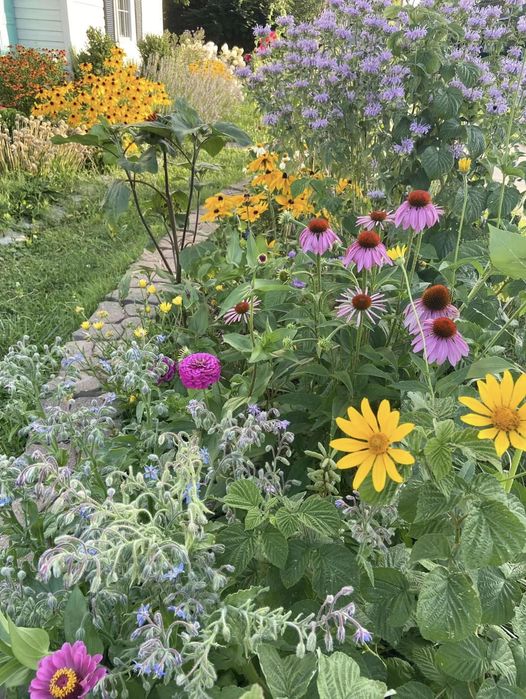The long awaited First Day of Spring has arrived!
Perennials poke their colorful blooms through the dirt after a winter of hiding underground. Crocus, daffodils, hyacinth, and narcissus bring a smile to our faces as if long lost friends have shown up for a visit.
Who doesn’t love spring?!
It’s also a reminder that no matter how badly we humans challenge mother nature, nature has a resilience that has been nurturing our habitats for hundreds of thousands of years. And she’ll continue to do so.
But we really could start being a lot smarter about how we can help.
For instance, who thought it was a smart idea to turn water-sparse lands into agricultural greenlands for growing acres of produce? Why would you plant where there is no water?
After a century of damning up healthy rivers and lakes to divert water to places it was never meant to go, there should be no surprise that those places are now struggling with water shortages and depleted water beds that affect our food production, energy production, and a sustainable supply of drinking water.
How many golf courses have been designed and built in deserts, just so people with idle time have a beautifully landscaped place to play a game?
Short term thinking from the past 100 years versus long term planning is proving to be a disaster.
In 1993 I spent a week in San Diego where I was shooting a TV commercial for a client at Point Loma. I took a break one day to visit the Balboa Gardens and Park and San Diego Zoo in San Diego. What a beautiful place! It was built for the 1915-1916 Panama-California Exposition, with plantings that include fabulous collections of ferns, orchids, tropical plants, palm trees, lily ponds, a lagoon, and a lush Japanese friendship garden with cherry trees.
But San Diego is a semi-arid climate, meaning that most of the lush landscaping I enjoyed at Balboa Park and the San Diego Zoo was not native in any way to the habitat it was living in.
Rain typically occurs only from December to March in San Diego. The rest of the year the climate is almost completely dry. Dense, lush gardens need lots of water to sustain them for months of dry spells.
And that’s the problem with Balboa Park.
The San Diego River runs east/west through the city and was used to create reservoirs and diversions that sustain this lush beautiful area I enjoyed. It is well-maintained and ranks high as a well run park system for the way it utilizes resources and integrates nature into old-town, new-town, and center city areas. But despite the accolades, it is unnatural. It shouldn’t be there.
There are “Balboa Parks” throughout our country. And while each of us on an individual level have no power or control to change any of what has developed over the past century, we do have the power to control it within the places we live.
Take a look at where you live.
Do you have beautiful expanses of green lawn that you maintain each year? Perhaps you pay a professional service to keep it looking beautiful for you. Do you find yourself setting up sprinkler systems to keep it watered when the climate is hot and dry in the summer just so it doesn’t brown out and look unattractive? Do you know that as habitat, a lawn is entirely useless?
Have you ever considered changing that lawn into a natural habitat? One that is full of native plants that will thrive on their own. Natural habitats include all types of plants from trees, shrubs, flowers, herbs, vegetables, wildflowers, and even those pesky things we call weeds but are actually beneficial to the birds, bees, butterflies, and insect life that is also native to your habitat.
Do you spend hours of time cultivating plants that were never meant to grow where you live? There is finally a trend where people are starting to realize the beauty, simplicity, and rewards of switching to native and natural plants as the smartest and lowest-maintenance way to have a beautiful landscape.
Native and natural habitats work whether you do container gardening from a condo balcony, live on a suburban lot in a development, or have a few acres to call your own. Landscapes done with native and natural plants are bonanzas for birds of all types – but especially for hummingbirds. And for butterflies and bees. Many species of butterflies are struggling to survive because so much of their natural habitat has been destroyed.
Honey bees face a similar fate. They pollinate 35% of all the crop plants that provide the food we eat and 75% of all the flowering plants we rely on for honey production. And they are disappearing. Bees need our help in keeping them alive. And we need them.
When you consider that native plants occur naturally in an environment it makes sense that they thrive without interference. They are hardy and low maintenance. They support your local ecology. They restore the habitat.
If we take care of nature in the right way, nature will take care of us in return. So go enjoy spring and this year grow some plants that are native and natural to where you live.
“With names like Butterflyweed, Milkweed, and Joe Pye weed, you can be sure these plants were not named by a marketing person.” Neil Diboll
If you enjoyed this blog and know someone else who would enjoy it, please share it.


Here’s a link to a really good PBS show that deals with this from a different angle, but ties it in well with your writings particularly towards the end of the show:
https://www.pbs.org/wnet/nature/serengeti-rules-dhbtnm/19906/